Our Verdict
A beautiful-looking monitor with a crisp, vibrant panel to match. Its HDMI 2.1 connection only adds to the versatile package that Eve has created with its first monitor. Beauty and utility, it's quite a mix.
For
- Excellent design
- Fantastic LG IPS panel
- Broad connectivity options
Against
- Poor HDR and local dimming
- High sticker price
PC Gamer's got your back
Looks like Eve has actually pulled it off. The crowd-created Eve Spectrum gaming monitor is an outstanding 4K, high refresh rate display, finally bringing HDMI 2.1 connections to our desktops. Who would have thought? Or rather the question you might have is: Who the hell is Eve?
It's a potentially loaded question depending on how you feel about the company's first venture, the Eve V. That was a 2-in-1 tablet that was supposed to crush Microsoft's Surface, but ran into production delays, and finally problems with its distribution partner which resulted in some people never actually receiving the device they'd paid for. And in some cases they struggled to even get their money back. Not a good look for anyone.
So there's a certain amount of ill-feeling towards the company because of this, but that hasn't stopped it from going full-bore at creating what it hopes will be the best gaming monitor. And that's not just based on its own theories about the subject, the Eve Spectrum has been designed by committee, with the company asking for feature requests and feedback on potential prototype designs all the way through the process.
Screen size: 27-inch
Aspect ratio: 16:9
Native resolution: 3840 x 2160 (4K)
Pixel density: 163ppi
Brightness: 450cd/m2 typical, 750cd/m2 peak
HDR: HDR10 | VESA DisplayHDR600
Colour depth: 8-bit + A-FRC
Response time: 5ms GtG typical
Refresh rate: 144Hz
Adaptive sync: NVIDIA G-SYNC Compatible certified| AMD FreeSync Premium Pro certified
Backlighting: Bottom edge-lit | 16-zone dimming (HDR mode)
Ports: 2x HDMI 2.1, 1x DisplayPort 1.4, 1x USB Type-C (video, 100W power, USB hub), 1x USB Type-B (USB hub), 1x USB Type-C, 2x USB Type-A, 3.5mm audio jack
Speakers: No
Price: $799 (+$99 for stand)
And the result is an $898 4K gaming monitor with one of the best panels in the business and a specs list that ought to have your drooling. The LG nano-IPS Oxide display is the heart of the Spectrum and is the key to the stellar visual experience the monitor itself provides. There are precious few panel manufacturers on the planet, and LG is undoubtedly one of the best. This latest nano-IPS display is an 8-bit + A-FRC screen, and one that can deliver 4K resolutions at 144Hz. For the professionals out there, it's rated with a colour gamut that covers 98% DCI-P3 and 100% of the sRGB colour space.
As an IPS panel you are getting a 5ms response time, but if you want to go hard on the overdrive settings you can push that down to the 1ms point. At the 'normal' overdrive setting there is no visible ghosting or inverse ghosting that I can see.
Another symptom of the use of an IPS panel, over something like a VA one, is the black levels aren't anything to write home about. They are possibly among the best I've seen on an IPS display without specific tuning effects enabled, though, but not like OLED-good.
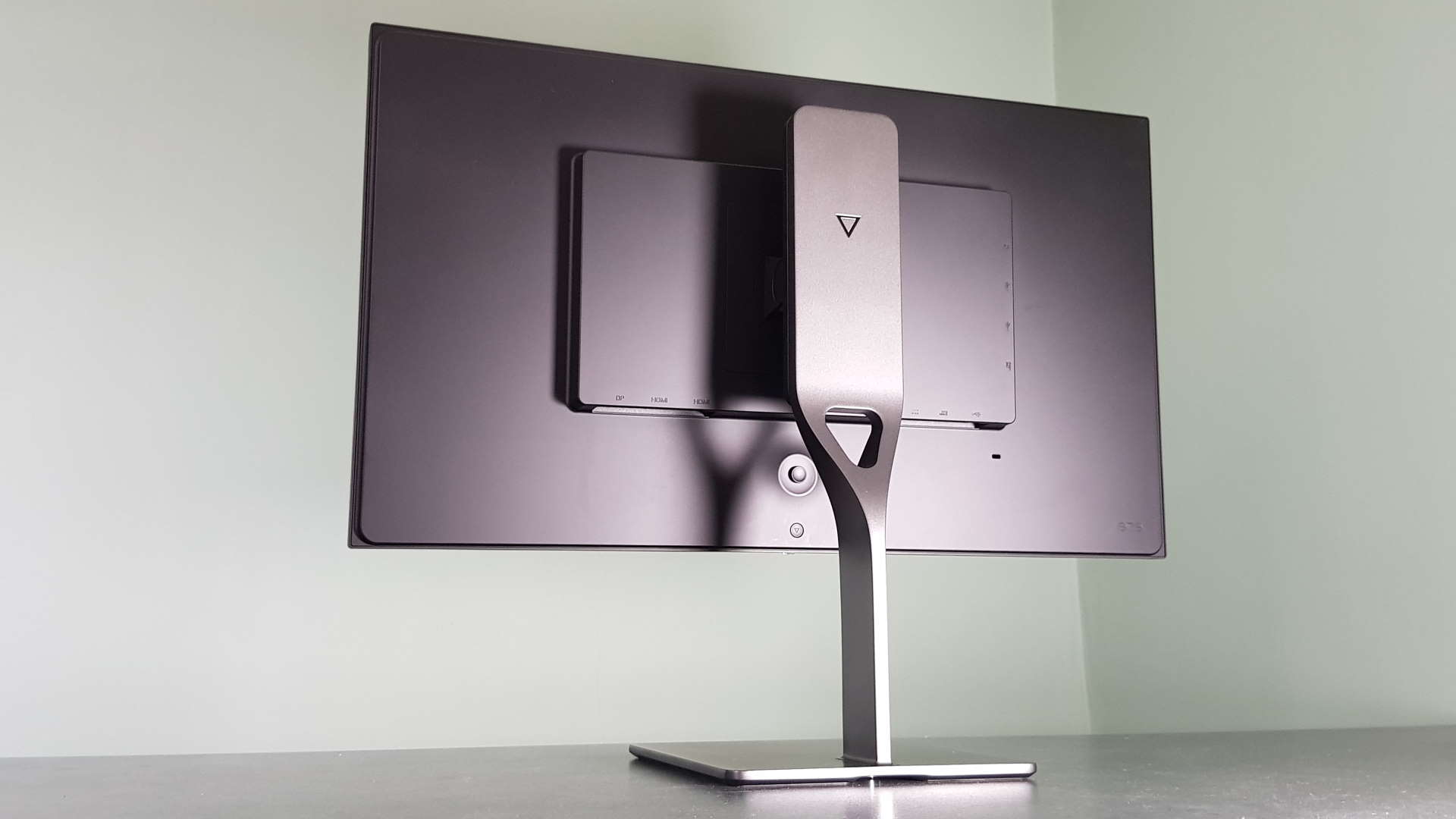
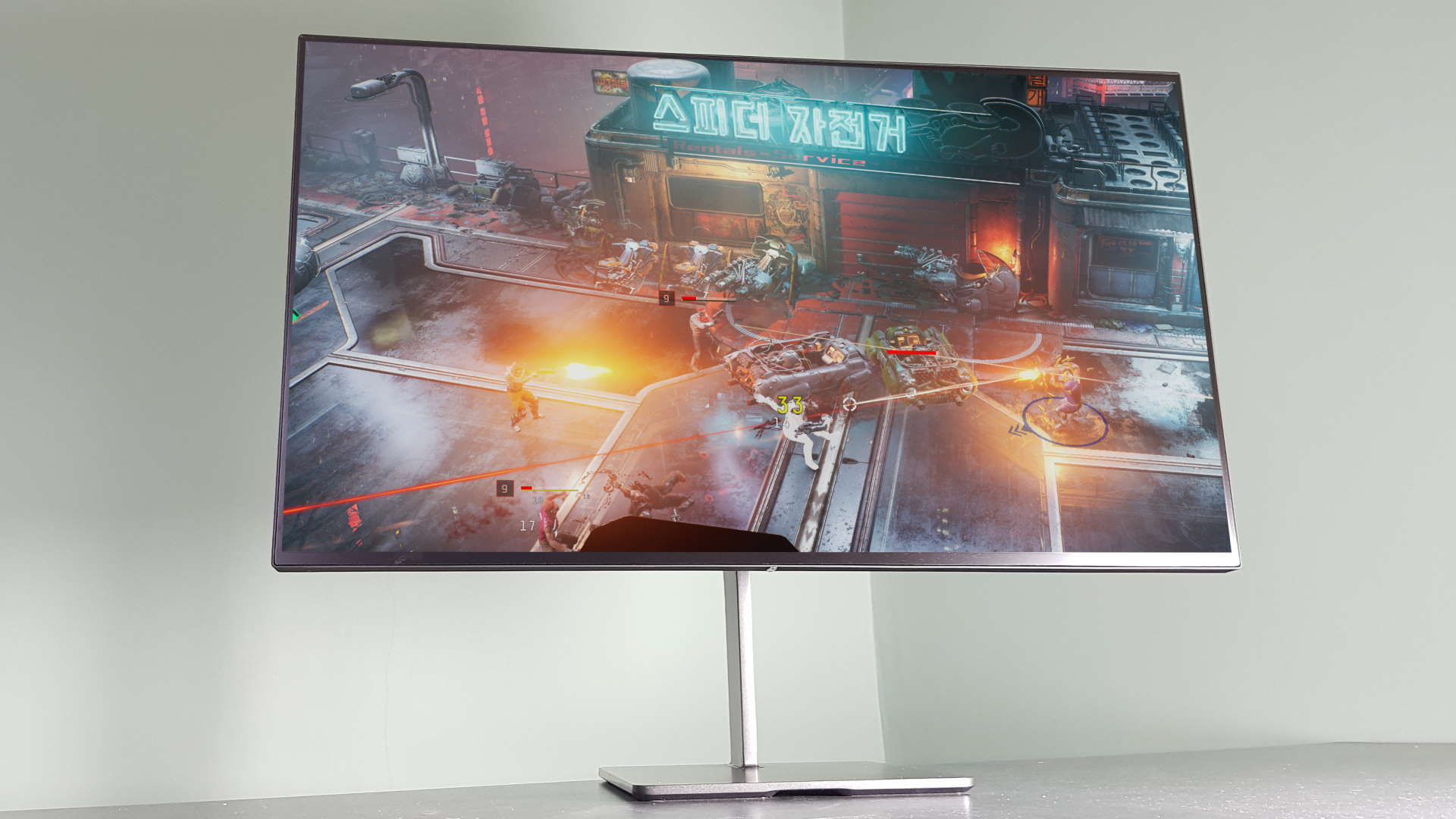
Contrast, however, is excellent, delivering a clear delineation between different shades of colours across the gamut, and the panel's white saturation is great too. Sure, a lot of that is down to the panel itself, but it must be said that the factory calibration Eve has done on this screen certainly looks good to me.
Then there's the viewing angles. I mean, you are going to be spending most of your time staring directly at the face of the screen, but it's got to be said that the Eve Spectrum looks immaculate from any angle. The colours remain consistent across the panel, and consistently vibrant too.
That 144Hz refresh rate looks great at 4K. Now, this isn't the first screen to nail a high refresh rate with an Ultra HD resolution, but with a pair of HDMI 2.1 ports in the back it's one of the first to be able to deliver that happily over a single HDMI cable. It's also running with adaptive sync to be able to maintain a smooth, flowing image in your games too.
Though strangely the claimed Nvidia G-Sync certification was seemingly not recognised by the GeForce RTX 3080 I had plumbed into it. We have been informed that will appear in the next driver update at the end of the month, and it is already listed in Nvidia's own G-Sync Compatible screens. It is also still completely functional in terms of the basic tenets of G-Sync, however, so I'm not sure that's necessarily a pressing issue.
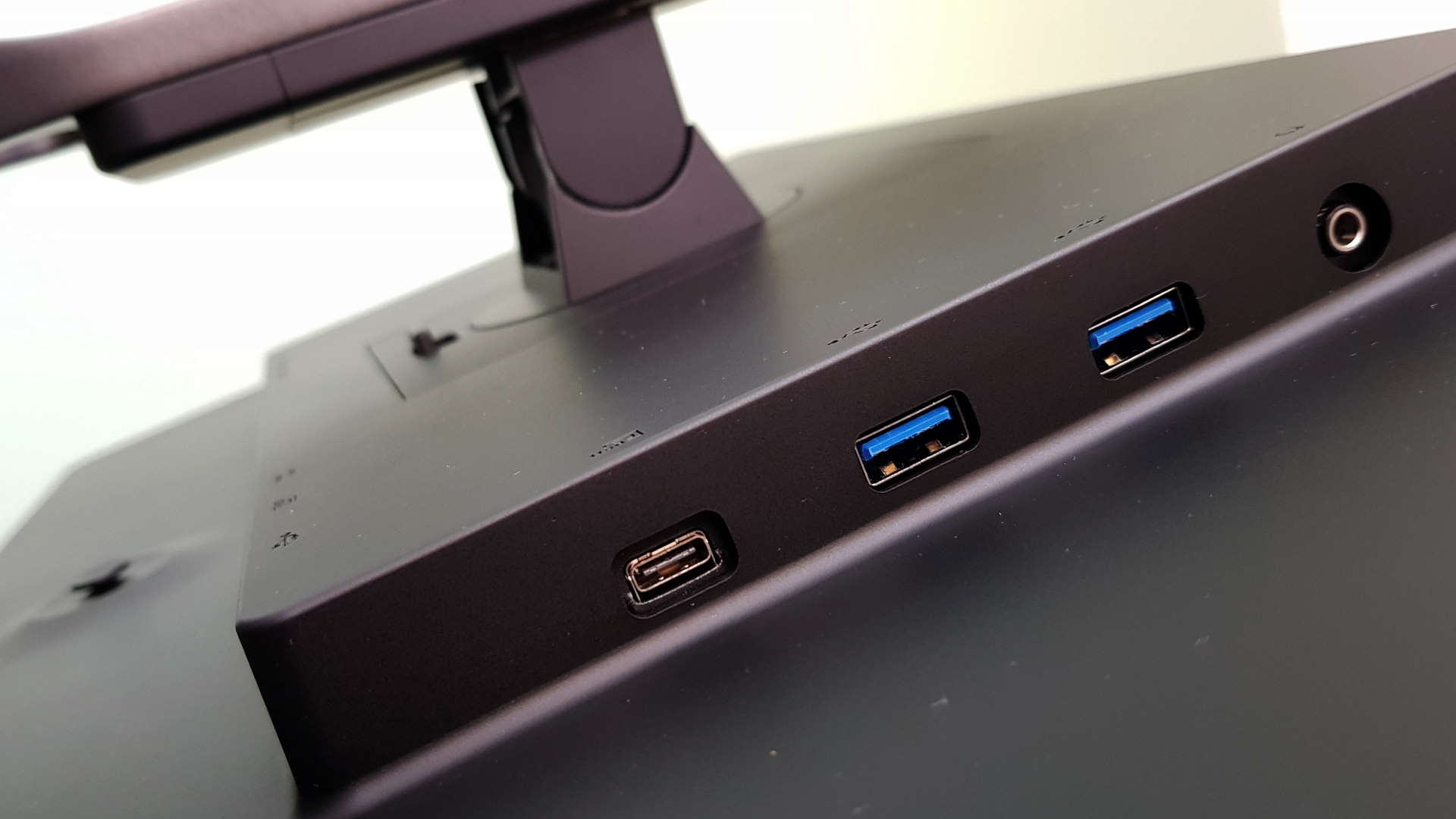
Honestly, having no local dimming is preferable to just a handful of zones
One thing the panel is absolutely not good for is HDR. Although the Eve Spectrum has been given a DisplayHDR 600 rating, and can hit a peak luminance level of 750cd/m2, this is not a monitor you want to use for HDR gaming. In SDR mode the panel uses a standard global backlighting system which is lit from the bottom of the screen. That's grand and results in an excellent image.
With the monitor in HDR mode, however, it switches to a local dimming backlight with 16 zones. Unfortunately that is still powered by the bottom edge-lit backlight and results in a strange rising column bleed effect in high contrast images. It's ugly, and can really mask the detail of a dark scene, which is precisely where you want HDR content to sparkle.
Running around a camp in Assassin's Creed: Valhalla, dimly lit by flickering torches and camp fires, it was almost impossible to see what the hell was going on. Valhalla actually also highlighted the issue again with the animated saving logo looping over a black screen, causing the bleeding effect to be even more noticeable.
Honestly, having no local dimming is far more preferable to just a handful of zones. If you're not talking in the hundreds, then there's not enough granularity to make local dimming worthwhile.
And, unfortunately, right now there's no way to disable it when HDR is enabled.
I say 'right now' because, since I've had the monitor, Eve has already launched a firmware update to improve Xbox Series X compatibility. So, there's a good chance that, if the community wills it and there is a way, Eve could update the OSD to give you the option to disable that local dimming down the line.
In standard SDR mode, however, the Eve Spectrum is a fantastic monitor. It's already brighter than most, and the impressive way it handles contrast means games can really pop on it. The pin-sharp 4K resolution, especially at 27-inches, is gloriously detailed—and with the refresh rate at 144Hz it flies with hardware capable of driving it to those extremes.
Whether the hardware inside the Xbox Series X counts as that I'm still not 100% convinced, though this is one of the first gaming monitors to actually allow the high-end Microsoft console to output at its 4K/120Hz peak. But it looks great matched with a high-end PC.
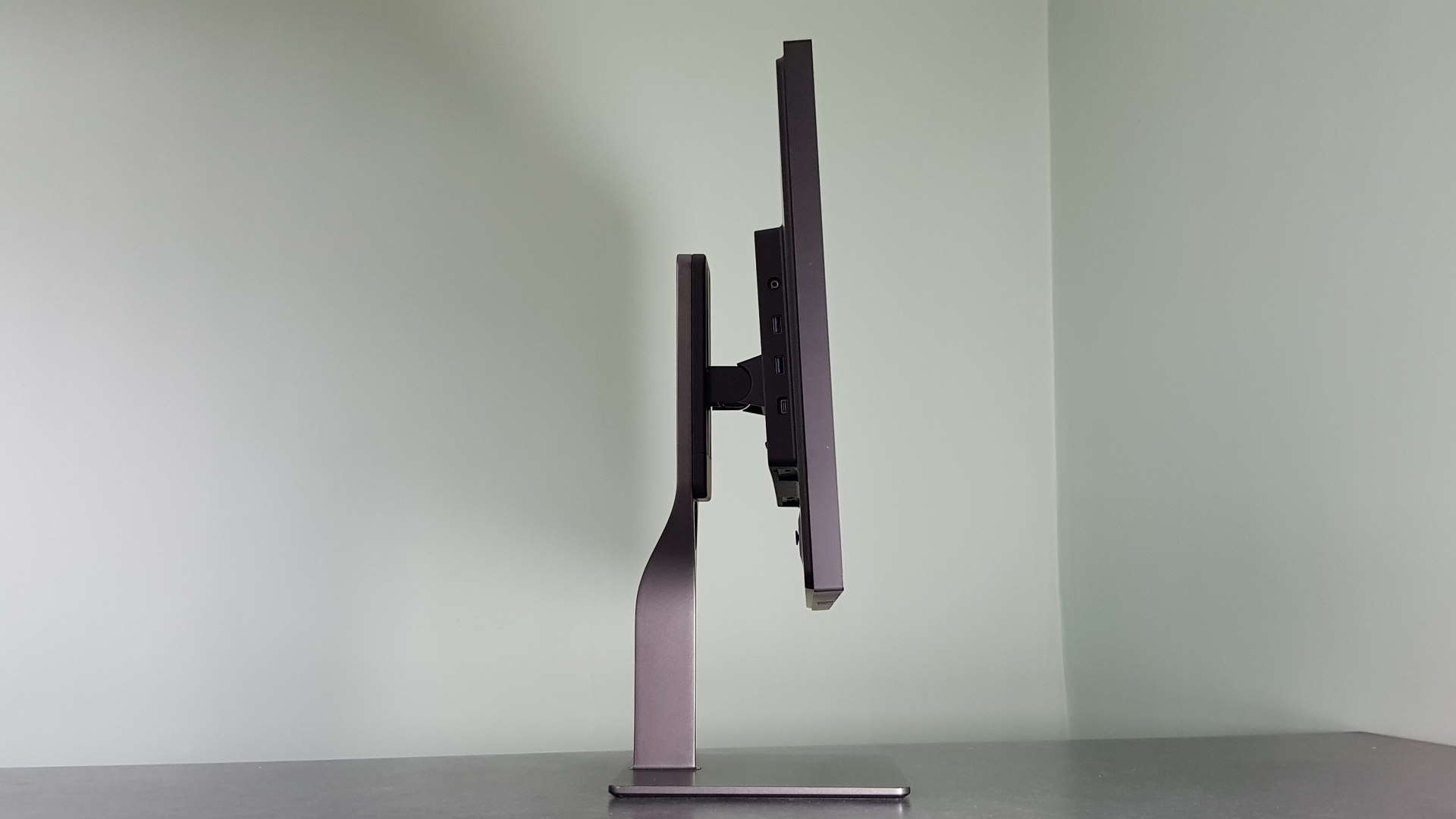
HDR aside, the Eve Spectrum delivers a visual feast for the eyeballs, but the actual design of the monitor itself is just as good. There is barely any bezel around the screen and the frame around it is wonderfully clean, with only a single LED below the bottom bezel to indicate that it's powered up.
Located on the rear of the screen, just behind that central LED, is the power button and the joystick which controls the OSD. My main monitor still uses a set of buttons arrayed side-by-side-by-side and I find them an absolute nightmare to use when navigating nested menus. A joystick is far more intuitive.
Then there's the optional stand, which is potentially divisive. It doesn't come as standard and means you have to add another $99 to your order price unless you've already invested in a VESA mount. The flipside, and the reason it was posited by 46% of the community in the first place, is that for those already with VESA mounts on the desktop it means they don't have to pay for a chunk of metal they're only going to junk anyway.
And that would be a supreme shame as it's one stylish stand.
The base is relatively narrow, but its depth makes it perfectly stable, and the slimline stand itself is wonderfully minimal, curving outwards to provide a cutout for cable management and the height adjust mechanism. The Spectrum can also tilt and rotate too.
The naivety surrounding its first over-ambitious product is something the company has learned from
The final feature worth shouting about, and another thing regularly requested by the community, is its USB hub. That's not a particularly unusual thing for a gaming monitor, but the Eve Spectrum has both USB Type-B and Type-C hub options. And, with the DisplayPort Alt mode feature, you can plug in your laptop with a single USB Type-C cable and get that one-cable-to-rule-them-all feeling.
The single wire will carry a 60Hz output at 4K, power the monitor's hub (with another Type-C and a pair of Type-A USB ports available), and charge your notebook to the tune of 100W. That's plenty enough to keep a Razer Blade Stealth 13 charged, outputting and running all three USB ports at the same time. It's not quite enough to keep a heftier gaming laptop running at full power under load, but still has enough oomph to charge when you're not gaming on it.
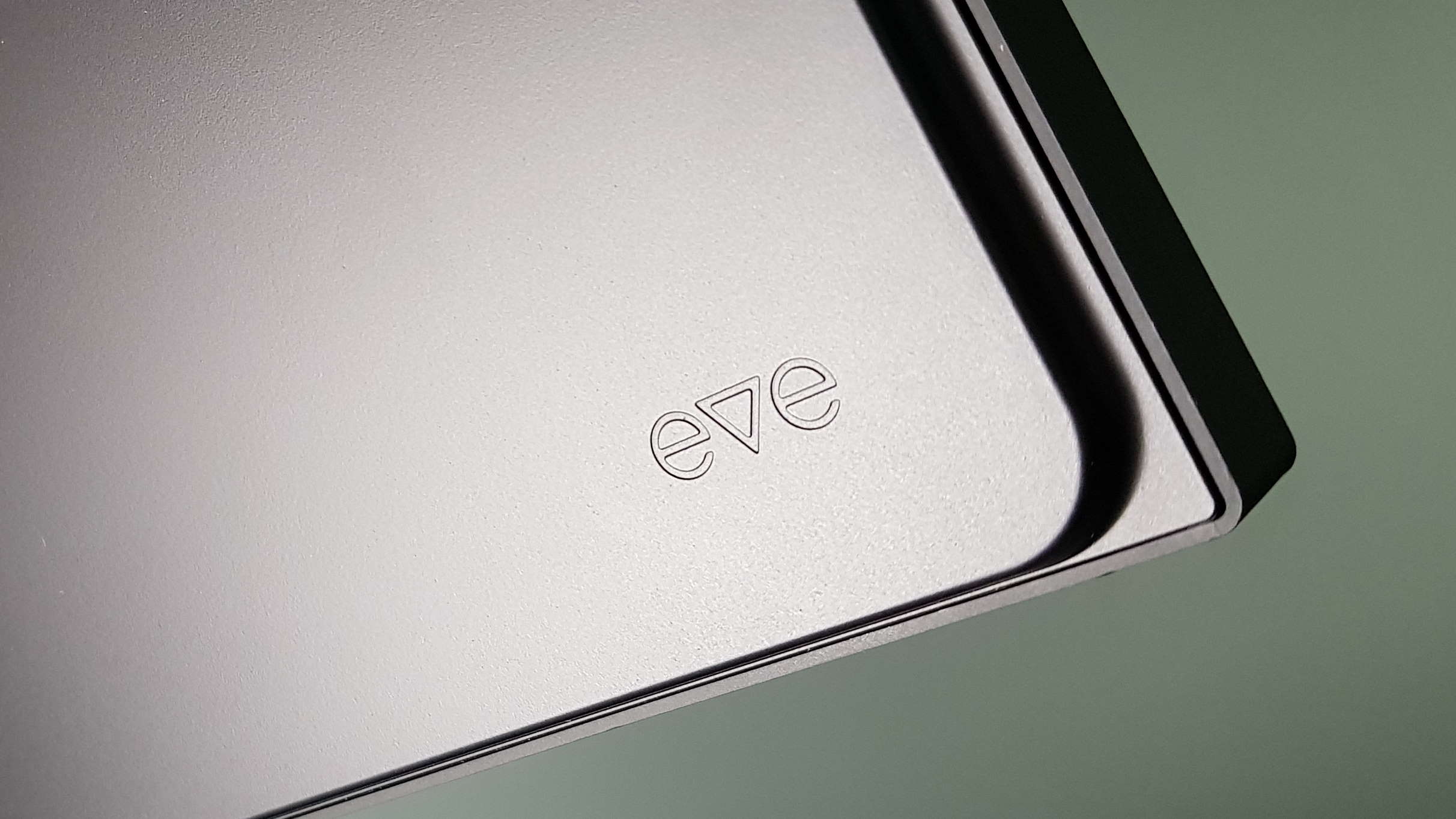
I'm genuinely a big fan of the Eve Spectrum gaming monitor. I've enjoyed watching it come to life as a crowd-designed product, been disappointed by the delays, worried by Eve's history, and finally delighted by the experience of actually using it. There will be people understandably so jaded by their battles over the Eve V tablet that they'll never give the company another chance, but it has shown the naivety surrounding its first over-ambitious product is something the company has learned from.
The product has been made, is shipping to customers, and the company is nailing down contracts to supply its screens to actual retail stores. That ought to give you the confidence that it has banished its nightmarish past to the annals of history.
And if we're focusing on the product itself, the Eve Spectrum is an outstanding gaming monitor. My only real issue is around the price. Now at $898 for the full package, it's a lot of cash. But it's not vastly different to the competition when it comes to high-spec, high refresh rate 4K screens. And the LG panel makes a great base—providing typically luscious visual fidelity—the factory calibration is effective, and the overall design makes for one of the most adaptable, easy-to-use gaming monitors around.
A beautiful-looking monitor with a crisp, vibrant panel to match. Its HDMI 2.1 connection only adds to the versatile package that Eve has created with its first monitor. Beauty and utility, it's quite a mix.

Dave has been gaming since the days of Zaxxon and Lady Bug on the Colecovision, and code books for the Commodore Vic 20 (Death Race 2000!). He built his first gaming PC at the tender age of 16, and finally finished bug-fixing the Cyrix-based system around a year later. When he dropped it out of the window. He first started writing for Official PlayStation Magazine and Xbox World many decades ago, then moved onto PC Format full-time, then PC Gamer, TechRadar, and T3 among others. Now he's back, writing about the nightmarish graphics card market, CPUs with more cores than sense, gaming laptops hotter than the sun, and SSDs more capacious than a Cybertruck.

